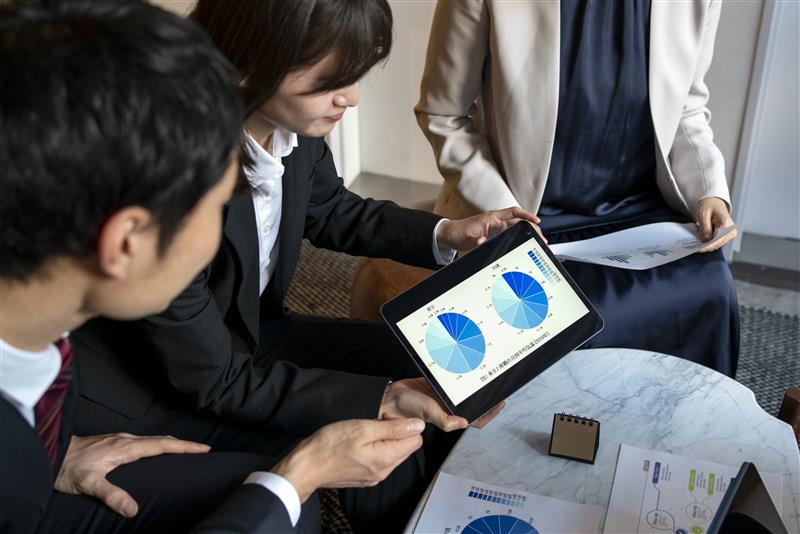Chaos in a Crisis: The Wake-Up Call for Utility Providers
It was just another Monday morning until it wasn’t. A regional utility provider received an unexpected regulatory audit request, triggering a flurry of urgent phone calls, emails, and frantic searches through outdated Excel sheets scattered across team folders. The lack of a centralized Energy reporting software left the utility scrambling. Site-specific data had been recorded but wasn’t harmonized, meter-level consumption was tracked but not traceable, and reports existed but were far from audit-ready. To make matters worse, IT was forced to halt all other tasks to manually generate over a dozen compliance reports.
This scenario is more common than you might think, and it’s a wake-up call for many within the energy sector.
Barriers to Efficient Reporting in the Energy Sector
The energy and utility industry thrives on precision, accountability, and timely insights. Yet, many players, especially those managing multiple sites or clients, are still shackled by outdated workflows.
- Scattered Site-Wise Consumption Data
Each site may follow its consumption tracking system, leading to fragmented visibility and inconsistent data formats. Comparing or aggregating metrics becomes labor-intensive and error-prone.
- Audit and Regulatory Reporting Burdens
Energy companies must maintain compliance with stringent government mandates and industry standards. When reports aren’t standardized or easily accessible, audit-readiness suffers.
- Time Lost in Repetitive Excel Reporting
Generating similar monthly, quarterly, or annual reports manually wastes countless hours. Worse yet, static spreadsheets don’t provide real-time insights, making decision-making slower.
- Non-Technical Teams Relying on IT
Business operations teams often depend on IT to extract and visualize data. This creates bottlenecks, especially when developers are overloaded or unfamiliar with energy-specific KPIs.
Clearly, the spreadsheet era is holding the industry back.
Looking to solve more than just reporting inefficiencies? Discover how smart utility billing software can eliminate hidden charges and bring full transparency to your energy consumption. Read our in-depth blog on Stop Overpaying! Switch to Smart Utility Billing Software Now.
The Spreadsheet Breakdown: Why It No Longer Works
While Excel has long been the go-to for energy reporting, its limitations are becoming more apparent:
- No real-time data: Static reports lack live updates, leading to outdated decisions.
- Version control chaos: Multiple copies of the same file create confusion.
- Data security risks: Sensitive meter data passed over email or stored on local machines increases vulnerability.
- Manual effort overload: From copy-pasting to formula auditing, maintaining spreadsheets demands hours of redundant work.
The energy sector needs more than just a better spreadsheet; it needs a transformation.
Enter Self-Service Energy Reporting: Built Different
Self-service energy reporting software enables users, technical or not, to access, visualize, and interpret real-time energy consumption data without developer intervention.
Whether you manage a single facility or dozens of client sites, this approach allows you to:
- Generate audit-ready reports on demand
- Schedule recurring insights without coding
- Build dashboards that highlight consumption trends, anomalies, and savings opportunities
- Empower business users with powerful visual tools, minus the IT dependency
It’s not just a shift in tools, it’s a shift in control.
How Ariel’s solution Is Changing the Game
At Ariel Software Solutions, we recognized these systemic gaps and built a robust, future-ready solution. Our self-service energy reporting tool, an extension of an already successful power monitoring application, is purpose-built using Blazor Server architecture and the DevExpress reporting framework.
Here’s what sets us apart:
- Blazor Server Backbone: Offers real-time, interactive performance in a secure environment.
- DevExpress Visual Reporting Engine: Enables highly customizable, drag-and-drop style reports.
- Multi-Site Compatibility: Monitor dozens of client locations seamlessly from a central dashboard.
- Self-Service + Scheduled Reporting: Create instant reports or set up automatic delivery at fixed intervals.
- Audit-Ready Formats: Built-in templates aligned with industry standards for compliance ease.
Whether you’re a sustainability officer, site manager, or regional director, Ariel’s solution speaks your language and simplifies your work.
Visual Reporting Without Developers
Gone are the days when business users needed SQL knowledge to ask the right questions. With Ariel’s solution :
- Operations teams can create visualizations for monthly energy consumption patterns.
- Finance departments can compare budgeted vs. actual usage without involving IT.
- Compliance officers can run back-dated reports in minutes.
No code. No delays. Just insights, ready when you need them.
Energy KPIs Made Easy
From macro-level summaries to meter-wise granularity, Ariel’s dashboards cover all critical energy metrics:
- Total Energy Consumption by site, department, or meter
- Peak Demand Hours and their cost implications
- Anomaly Detection for unusual consumption spikes
- Monthly Trends & Comparisons for Year-over-Year Benchmarking
- Carbon Footprint Insights for Green Reporting
This allows stakeholders at every level to make smarter, faster decisions backed by data.
Security & Scalability: Designed for the Real World
In energy management, data sensitivity isn’t optional, it’s mission-critical. Ariel’s solution ensures:
- Role-Based Access Control (RBAC): Define who sees what based on roles and locations.
- Multi-Tenant Architecture: Perfect for consultants or utilities managing multiple clients.
- Secure Hosting: Built on .NET and hosted in compliance with enterprise-grade security practices.
As your energy operations scale, Ariel scales with you.
ROI and Time Saved: Tangible Business Value
Let’s put it in real numbers:
- A regional energy consultant using Ariel’s tool reduced the monthly report turnaround from 3 days to 30 minutes.
- A facility manager eliminated IT reporting dependencies, saving over 20 staff hours/month.
- Audit readiness improved drastically, with 100% compliance on format and data consistency.
The result? Lower operational costs, fewer delays, and happier clients.
Conclusion: Spreadsheets Belong to the Past

The energy sector is evolving rapidly. With rising regulations, sustainability targets, and multi-site complexity, yesterday’s tools won’t solve tomorrow’s problems.
Ariel Software Solutions invites you to leave static spreadsheets behind and embrace self-service energy reporting that is powerful, customizable, and built for your world.
Ready to see it in action?
Schedule a demo or contact us today and discover the smarter way to manage energy.
Frequently Asked Questions (FAQS)
1. What is self-service energy reporting?
Self-service energy reporting software allows users to access and analyze real-time energy consumption data without needing IT support. It’s designed for both technical and non-technical users, providing customizable insights.
2. How does Ariel’s self-service energy reporting solution work?
Ariel’s solution uses Blazor Server and DevExpress for interactive, real-time dashboards. Users can create reports, schedule recurring insights, and visualize consumption patterns without any coding.
3. Can non-technical teams use Ariel’s self-service energy reporting solution?
Yes, Ariel’s solution is user-friendly, enabling non-technical teams like operations and finance to generate reports and track trends with ease, without technical expertise.
4. How does Ariel’s solution help with audit readiness?
Ariel’s solution provides audit-ready report templates, ensuring reports meet industry compliance standards and can be generated on demand, streamlining the audit process.
5. How secure is the data on Ariel’s solution?
Ariel’s solution uses role-based access control (RBAC), secure hosting on .NET, and multi-tenant architecture to ensure data is kept secure and compliant with enterprise-grade standards.




